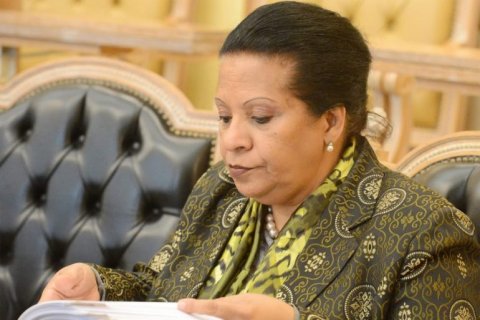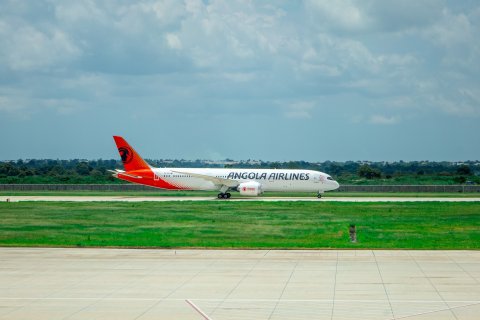However, despite the emergence of the capital market in Angola being linked to the wave of financial system reforms that occurred in Portuguese-speaking African Countries (PALOP) in that period, with emphasis on Mozambique and Cape Verde, the prelude to the capital market in Angola, was marked by timid steps fundamentally conditioned by the country's economic situation, which first led to the emergence the regulatory component and subsequently the market.
The financial market constitutes one of the five fundamental elements of any financial system, being considered the channel par excellence for the harmonization of interests between economic agents in surplus situations and economic agents in deficit situations.
In this context, the financial market can be classified according to several criteria, the best known of which takes into account the maturity of the financial instruments traded. thus being the money market (short term) and the capital market (long term).
In the composition of the Angolan financial market, while the monetary market, is intrinsically linked to the creation of the National Bank of Angola (“BNA”) on November 5, 1976 as a pragmatized element through the execution of the operational framework of the Monetary Policy. The capital market ended up having its development linked to the growth of the financial system itself with the emergence of new actors, notably the Capital Market Commission (“CMC”) and the Angola Debt and Stock Exchange (“BODIVA”).
Certainly, the observation of financial markets in other realities leads us to consider that the attraction of the capital market is linked to the existence of a functional and transparent stock exchange. The stock exchange is considered the highest point of a market economy, representing a perfect duality of success and failure, as it is on the stock exchange that the greatest dreams of business financial success come true on the one hand, and on the other hand, the stock market is the mother of great financial crises.
The Angola Debt and Stock Exchange (“BODIVA”) in terms of constitution, represents the second Stock Exchange in Angola, the first being the Angola Stock and Derivatives Exchange (“BVDA”) established in March 2006 with a share capital of 1,343,000,000.00 and the respective participation of 22 shareholders. Meanwhile, BODIVA was only incorporated in July 2014 with a share capital of 900,000,000.00 and just one shareholder, in this case the Angolan State.
Despite BODIVA having emerged after BVDA, it is considered a major milestone in the stock market in Angola as it meets all the operating and transparency conditions for a stock exchange to prevail. Therefore, in the ten years of the stock market, the main question to be asked is what has changed for Angolan investors?
As nothing is permanent, certainly the most objective answer, analyzing the ten years that the Angolan Debt and Stock Exchange will complete in 2024, has changed everything!
Since the emergence of BODIVA in 2014, there has been a change in three components:
1. Expanding the investor base;
2. Expansion of the issuer base;
3. The challenges of the new operating model of the securities market.
Expansion of the Investor Base: Before the emergence of the Debt and Stock Exchange in Angola, all operations within the secondary market took place outside the exchange, with greater emphasis on Public Debt Instruments (Treasury Bills and Treasury Bonds), these being moved through SIGMA (Integrated Asset Management System) and Central Bank Securities issued by the National Bank of Angola, whose transferability was carried out through Commercial Bank Branches.
The modus operandi of the secondary market, before the emergence of the Stock Exchange, was fundamentally marked by bilateral operations and a major challenge in terms of controlling the growth of the respective investor base. In the current scenario, there is greater control over the growth of the investor base participating in the eight (8) market segments already activated by BODIVA, resulting in an average growth in the investor base in the active custody accounts component of 19,200 investors who, during the ten years of the stock market in Angola, have already moved an average of around 1.5 billion kwanzas.
Expansion of the Issuer Base: In addition to the expansion of the investor base and the possibility of greater monitoring due to the entire existing structure at CEVAMA, certainly in the last ten years, different Issuers have used the Angolan stock exchange as a strategic channel for obtaining financing through the issuance of shares or the issuance of bonds.
It is in this dimension that gave rise to the emergence of the Angolan stock exchange and given its organization and transparency that in 2018 the coordination of Primary Treasury Bond Market issues were no longer carried out by the BNA and began to be carried out by BODIVA, in accordance with the guidelines of the State Issuer, represented by the Public Debt Management Unit (“UGD”), this is the process of internal debt through securitized public debt instruments, as well as special issues to settle arrears (debts) or capitalizations since 2018 that constitute a coordination that increasingly highlights the importance of the Angolan stock exchange.
In addition to the State as a public Issuer, during the ten years of the Stock Exchange, the issuer base expanded by around 90%, counting since its existence with around nine (9) issuers, thus meaning an increasing appetite largest of companies in the search for complementary financing to that traditionally offered by Banks, in which the capital market ends up configuring an unavoidable path for companies that intend to consolidate themselves in the market in terms of reference.
The Challenges of the New Operating Model of the Securities Market: Without prejudice to the interesting numbers in terms of expanding the issuer base and investor base respectively, the ten years of the stock exchange in Angola will be fundamentally marked by two aspects to highlight : (i). Stimulation of market segments currently existing on the Angolan stock exchange and (ii). Resilience capacity of recently admitted Brokers and Distributors to continue consistently with the level of demand and transparency that the market prevails.
Along this path, the ten years that the Angolan stock exchange will complete in 2024 will certainly represent an event of reorganization of the modus operandi of the capital market in Angola. Not actually a new normal, but rather the genesis of the normal functioning of the capital market in which all actors will be protagonists in the dynamization of the market that is expected over the next ten years.








